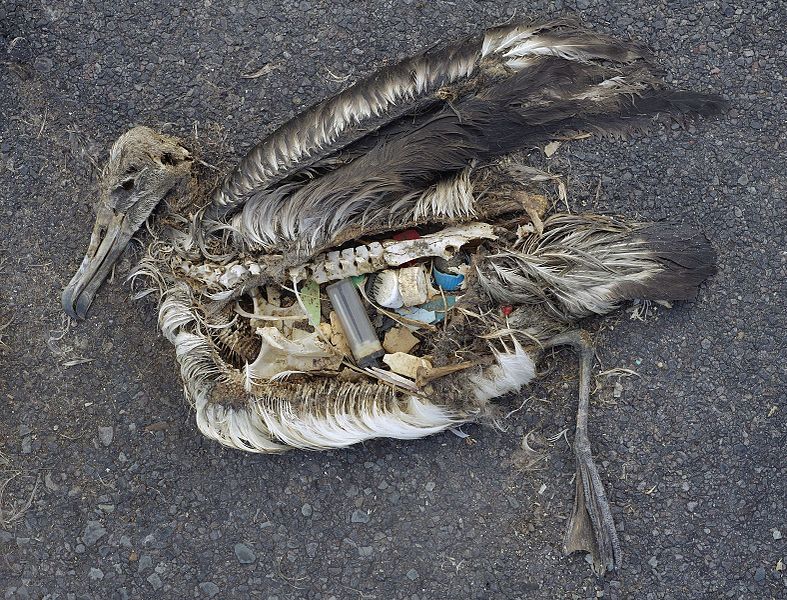
It is not an uncommon fact that our oceans are polluted with a large quantity of plastics and waste produced by humans. It is also widely known that within the ocean also lies the Pacific garbage patch, a swirling gyre of micro-plastic. However, these collections of plastic are having a more devastating effect on the ocean’s chemistry and biology than previously believed.

Sea birds have adapted to living and thriving off the bounty that the ocean provides, feeding on a variety of fish and crustaceans to sustain themselves. In general, most species of seabirds live longer, breed later and invest a lot of time into their young’s survival, preparing them for the long migratory journeys they have to make.
However, with plastic production on the increase— estimates suggest concentrations up to 580,000 pieces per km2 , a number that is still rising due to the population increasing— this eventually begins to negatively impact the environment and many ecosystems.
The diet and behavior of sea birds makes them very susceptible to plastic ingestion, they can easily and often mistake a floating lighter or bottle cap for a tasty fish or crustacean. A report published in January 2015, in the National Academy of Sciences journal three scientists analysed and studied 186 species worldwide and before comparing their data to that of previous year. Alarmingly, they discovered that up to 90 percent of seabirds are likely to have plastics within their digestive system. One case described in the report outlined that a short-tailed shearwater bird was found with an entire glow stick and three balloons within its gut.

Ingesting a foreign object, whether it be plastic or of another substance, can be extremely dangerous for any organism that roams this planet. The object, which can often block the animals digestion tract, cause internal infection or directly poison the animal, can kill many of the species that ingest.
Ultimately, this then has a devastating knock on affect on the already dwindling seabird population. This issue is then made exceedingly worse when the current generations of birds pass down this deadly habit to their young. Juvenile sea birds, like many other species, rely on their parent to show them how to survive. The adult bird shows their young how to catch food and avoid the predators that dwell below the waves, a process which has ensured the specie’s survival; however, if a parent was to swallow a deadly plastic substance, then it is likely that the offspring would soon follow suit.
Lead Oceanographer, Dr. Julia Reisser, at the Ocean cleanup, a Netherlands based group, stated that “I’ve studied plastic in all the world’s oceans, but never seen any area as polluted as the great pacific garbage patch, with every trawl we completed, thousands of miles from land, we just found lots and lots of plastic.”
Since our knowledge of the detrimental effects these polluting plastics and micro-plastics are having on the planets biodiversity and environments is steadily increasing, many groups are now advocating for the removal or ban of micro plastics from various products. The more awareness that is created, the better the chance the sea birds have at survival.
This Article (Sea Bird Populations at Risk With Rising Pollution and Ingestion of Plastic) is free and open source. You have permission to republish this article under a Creative Commons license with attribution to the author and AnonHQ.com.




